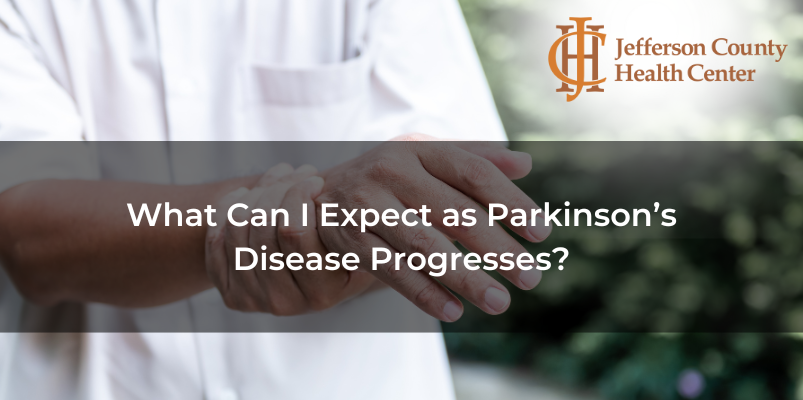What Can I Expect as Parkinson’s Disease Progresses?
April 22, 2025

Parkinson’s disease (PD) is a progressive neurological disorder, meaning it changes and worsens over time. But the pace and pattern of progression are different for everyone. Some people experience a slow onset of symptoms over decades, while others may progress more quickly. Knowing what to expect in each stage of PD can help patients, caregivers, and families plan for the future.
Healthcare professionals often use a five-stage scale to describe the progression of movement-related symptoms in Parkinson’s disease. This scale is helpful for understanding how the disease may develop over time.
Stage 1: Early Signs
Symptoms are typically mild and may go unnoticed. Common signs in this stage include slight tremors, subtle changes in posture or facial expression, and a slight slowness of movement. These symptoms usually occur on one side of the body and do not interfere significantly with daily life.
Stage 2: Worsening Symptoms
At this stage, symptoms begin to affect both sides of the body. Tremors, rigidity, and changes in facial expressions may become more noticeable. Daily tasks might take longer, but people can still manage their routines independently.
Stage 3: Mid-Stage Parkinson’s
This is often the turning point in disease progression. Balance issues and falls become more common, and motor symptoms may start to interfere with daily activities. While most people can still live independently, more assistance may be needed for some tasks.
Stage 4: Advanced Symptoms
Symptoms are fully developed and significantly impact daily life. Movement is severely impaired, and most individuals require assistance with daily activities. Walking may require a walker or other mobility aid, and the risk of falls is high.
Stage 5: Full Dependence
This is the most advanced stage. Individuals may be unable to stand or walk and often require around-the-clock care. Symptoms can include stiffness, freezing of gait, cognitive changes, and difficulty communicating. Support from caregivers or long-term care services becomes essential.
What Can You Do?
Even as Parkinson’s progresses, there are many ways to manage symptoms and maintain quality of life. Early and ongoing collaboration with a healthcare team—including neurologists, therapists, and support groups—can help you stay informed and prepared. Support groups, such as the one offered at Jefferson County Health Center, can also provide guidance and connection throughout every stage.
If you are a caregiver for someone in the advanced stages of PD, resources are available to help you navigate the unique challenges of this stage. Ask your care team for tips on safety, communication, and maintaining dignity and comfort.
Sources:
- Parkinson’s Foundation. “Stages of Parkinson’s Disease.” https://www.parkinson.org/Understanding-Parkinsons/What-is-Parkinsons/Stages-of-Parkinsons
- Michael J. Fox Foundation. “Progression of Parkinson’s Disease.” https://www.michaeljfox.org/news/progression-parkinsons-disease
- Mayo Clinic. “Parkinson’s Disease: Symptoms and Causes.” https://www.mayoclinic.org/diseases-conditions/parkinsons-disease/symptoms-causes